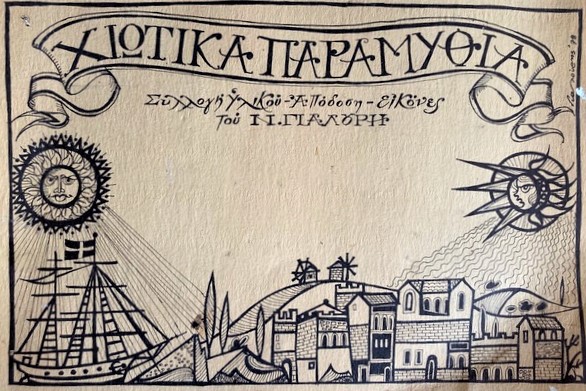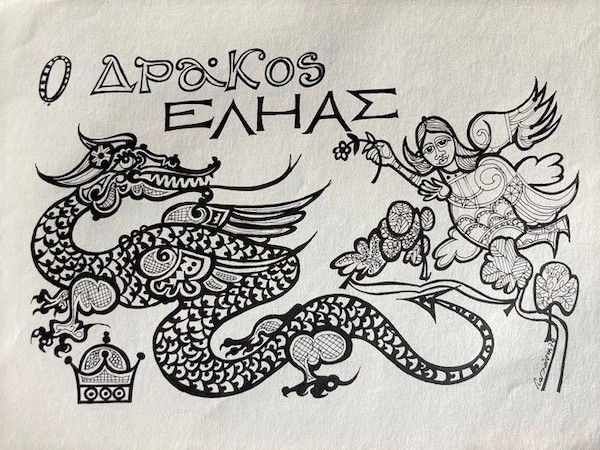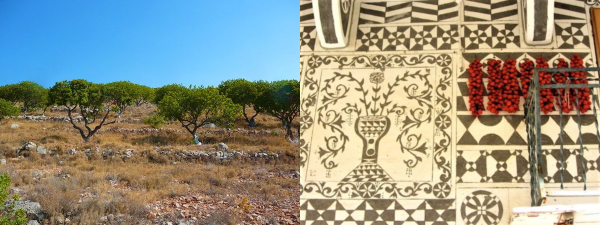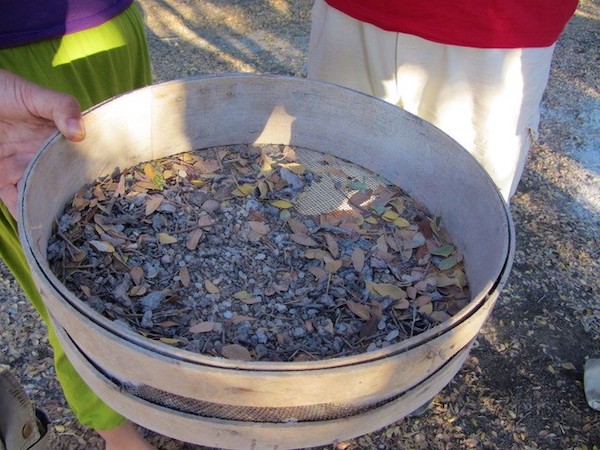Revisiting The Magical Island of Chios

“It’s been so long since I’ve been anywhere beyond my own backyard(s)—Athens and Andros—that I’m beginning to feel a nagging wanderlust. All the fuss involved in going abroad doesn’t tempt me, but how I would love to get into the car and head south to the Peloponnese or north to Macedonia. Or board a ship and sail until it reached its final destination. This being winter, and not one but three viruses are making their presence felt, a trip seems out of the question at the moment, so I’ll content myself with memories and take you with me on a series of visits to the remarkable island of Chios in the northeastern Aegean.”—Diana Farr Louis
Eating Well Is The Best Revenge
By Diana Farr Louis

ATHENS Greece—(Weekly Hubris)—1 February 2023—It’s been so long since I’ve been anywhere beyond my own backyard(s)—Athens and Andros—that I’m beginning to feel a nagging wanderlust. All the fuss involved in going abroad doesn’t tempt me, but how I would love to get into the car and head south to the Peloponnese or north to Macedonia. Or board a ship and sail until it reached its final destination.
This being winter, and not one but three viruses are making their presence felt, a trip seems out of the question at the moment, so I’ll content myself with memories and take you with me on a series of visits to the remarkable island of Chios in the northeastern Aegean.
Although I spent many summers sailing with friends in the Cyclades, Dodecanese, Sporades, and Ionian islands, I never went to Chios until my dear friend Becky Dennison Sakellariou and I formed a partnership called Modus Scribendi and started editing a magazine for the Chandris Hotels. Τhe chain was small, just four hotels—in Athens, Crete, Corfu, and Chios, where the family, more famous in the shipping world, originates—but they were luxurious. And we were treated, with our spouses, to long weekends, all expenses paid, naturally.
I don’t remember much about that first visit, in the late 1980s, except for meeting a Renaissance man, an artist-writer named Nikos Yialouris, who decorated the Chios Chandris, but also wrote plays, poems, and children’s books, embellishing on local folklore, which he illustrated with his inimitable engravings, watercolors, and penmanship. We quickly became friends as he guided us round the old parts of Chios town, making jokes in impeccable English, which I later learned was self-taught. Rummaging through our storeroom, I found a copy of his Chiot fairy tales and a letter urging me to publicize the English translation in the “Chandris Magazine, though the illustrations alone make it a collector’s item. This quote shows the way his mind worked (he died in 2003, far too soon, in his early 70s.): “Throughout the . . . collection I’ve tried to integrate some basic truths and things familiar to very young children but also to ‘aged’ eyes. I hate ‘slogans’ the way they use them in many children’s books, either political, moral, or ecological, they are served to the reader in such a stupid way that they make him turn his nose up.”

The highlight of my second visit to the island, in 1991, was another legendary figure, a true Renaissance man. Chios was celebrating (a bit prematurely) the 500th anniversary of Christopher Columbus’s voyage to the “Indies” and his discovery of the New World. Why Chios? Because, after the notorious Fourth Crusade in 1204, when Doge Manolo Dandolo diverted the Venetian fleet to attack Constantinople rather than Jerusalem, the Catholic knights divided up the Byzantine Empire among themselves and Chios fell to the Genoese. Chios was a prize, coveted because of a unique product, mastiha, the crystallized sap of an unprepossessing tree, used as a flavoring throughout Anatolia and the Arab World.
Until recently, it was taken for granted that the renowned admiral was a native of Genoa, and had spent some time on Chios before offering his services to Ferdinand and Isabella of Spain. And at that conference, one speaker stood out among the many. She postulated that the great seafarer had been inspired to set off on his journey into the unknown on a quest to find another source of mastiha! If you have ever sampled the stuff, which was the original chewing gum, you may wonder what all the fuss was about; it is definitely an acquired taste. But although explorers have left no corner of the planet unexamined in the meantime, the common Pistacia lentiscus tree only weeps marketable tears of mastiha in southern Chios.

Since then, the plot has thickened and close research and readings of Columbus’s diaries, written in Greek and Latin but not Italian, indicate that perhaps he was not Genoese at all, but Greek, a native of Chios, where the name Kolombos is common in the mastic village of Pyrgi.
It makes you think of “My Big Fat Greek Wedding”: every notable thing or person can be traced back to Greece . . . eventually.
Included in the ’91 celebrations was a sail to the nearby Inousses, a cluster of tiny islets which have more shipowners per square foot than any other place in this country. Recognized by an old friend, the architect of more than one of their mansions, I was slipped into the yacht that carried such VIPs as the US Ambassador and Margaret Papandreou and treated to a tour of the main island and a magnificent buffet lunch, whose details escape me.
My next visit, as a guest of the Oldways Preservation and Exchange Trust in 1999, involved much more in-depth exploration, gastronomic experiences, and meetings with fabulous colleagues in the food world as well as locals. We went north to a fish farm and were fed in Avgonima, a fortified village like an egg in its nest; climbed the scary, stony path to Anevato, a deserted village whose inhabitants were massacred by the Ottomans in 1822, and tiptoed through history- laden Nea Moni, new in 1042 (Chios itself was a nation-state in the 8th century BC). But the main focus of our visit was the elegant mansions and citrus groves of Kambos and the mastiha villages.

The mastiha villages—Pyrgi, Mesta, and Olympi being the most famous—were medieval fortresses built by the Genoese, with thick walls and heavy gates, low-ceilinged archways, and facades painstakingly decorated with xysta, patterns “scraped” through the whitewash that are unique to Greece but reminded me of some buildings in Liguria. We passed women sitting in klatches by their doors, meticulously cleaning mastiha crystals from the leaves and dirt collected with them. I asked one if she ever cooked with mastiha. “Po, po, po,” she shuddered in horror. “Never!” I suppose the reaction was akin to that of someone who works in a chocolate factory—too much of a good thing.
As always with Oldways trips, though, what sticks in the memory most are the convivial meals that forged durable friendships. Of these, one in particular keeps repeating itself as a leitmotif these days when would-be Sultan Erdogan is making increasingly threatening noises about Greece’s right to the islands closest to Turkey and even its right to explore the seas to the west of Crete!
We were sitting at a taverna in the harbor, able to see lights of cars driving along the coast near Cesme opposite. Three of my dining companions were Turks, Filiz Hosukoglu, Engin Akin, and Ihsan Gurdal. Ihsan, who had played on the Turkish volleyball team before moving to Cambridge, Massachusetts, marrying an American, and opening a specialty shop called Formaggio Kitchen there, started to speak. “Close your eyes, listen to this music, taste the food, we could be in Turkey. It takes me back to when our team was playing Greece. The coach would get us all together and then give us a pep talk: ‘Go onto that court and massacre those guys, destroy them’, or words to that effect. But,” Ishan went on, “I couldn’t. We ate the same food, we smelled the same, we were brothers.”
And that’s what I feel, too, every time I go to Turkey, even as an adopted Greek, that the two countries would be such a power for good in the eastern Mediterranean if they could join forces, be friends instead of enemies, recognize the commonalities in their heritage while sitting down to a meal of dolmades, keftedes, tzatziki, kebabs, and baklava, instead of arguing about who invented which and when (and worse).
There’s so much more to say about Chios and its history, its people, and its products, and I have written about it before, so I will close with a mini-memory from Genoa.
One day, as we were wandering around the old city, we came upon a stone house set within a fenced garden with a sign, La casa de Cristoforo Colombo. We peered in for a closer look and I happened to see another sign below a low tree. It read in Greek and Italian: “This mastiha tree is a gift from the people of Chios to the people of Genoa.” The house is an 18th-century copy, not the original dwelling, and apparently Columbus only lived there as a child, but I love the idea that mastiha connects the explorer’s two homelands, and that, thanks to Mediterra (The Mastiha Growers Cooperative) in Chios and to Giannis Mandalas, who founded the Mastiha Shop, this unique resin is now being used more and more, not just in varnishes and chewing gum, but in treatments for ulcers, soaps, and creams, a delectable liqueur, and savory as well as sweet foods. Hippocrates, who was the first to tout its virtues, would be very pleased.
In retrospect, I should like to thank all the generous people who funded my trips to Chios, making my experiences extra special: (the late) Chrysostomos Economou of Chandris Hotels, (the late) Dun Gifford and Sara Baer Sinott of Oldways, and Giannis Mandalas, CEO of Mediterra.
Recipe
Turkey Fillet Piccata
Here is a quickie, something I turn to again and again when we crave a little bit of flesh and I don’t have time to prepare vegetables or stand over a hot stove. I won’t give precise amounts for the few ingredients as I have never paid any attention to what they might be.
1 slice of turkey fillet per person, pounded thin
Flour for dredging
Butter and olive oil
1 large lemon, grated and juiced
Knorr homemade chicken broth cube, dissolved in boiling water
Generous handful of capers
Chopped parsley
Pour some flour into a paper bag, add the turkey slices, and shake to cover them lightly with the flour. Heat some butter and olive oil in a large non-stick pan and brown the slices on each side. Remove to a clean plate. Pour in the lemon juice and broth—I use about a cup for two large scallopini—and boil to reduce for a couple of minutes. Add the grated lemon peel and the capers, stir, and then replace the turkey slices in the pan. Continue boiling until the liquid reduces to a nice thick sauce, while turning the slices a couple of times. A minute or two before serving, stir in the chopped parsley.
Yummy. I made this the day I was writing this column and we did not leave a molecule of sauce in the pan.
![]()
To order the paperback book, click on the book cover below:


5 Comments
Di Drymoussis
Loved this piece about Chios. We also once stayed at the Chandris there – back in
the summer of 1980. Very nice. The main focus of our visit was those wonderful old mansions and citrus orchards of the Kambos which we were shown around by a Chiot native whose dream was to find funds to regenerate them and create summer schools for American students to spend time there and learn Greek and Greek history.
===============
Turkey filet piccata….. mmmm For once here’s a delicious sounding recipe – without garlic (which I’m unable to tolerate) I think I’ll give this a try!!
What kind of flour do you use Diana? We’ve taken to using ‘yellow’ flour – for instance when we fry fish – which is grittier and doesn’t ‘stick’ to the base of the pan as does ordinary all purpose flour.
Diana
Dearest Di, I would have mentioned Kambos, the wonderful mansions and the citrus groves if I’d space. One of them has now been made into a glorious Citrus Museum, and shows the history of the island’s relationship with oranges and tangerines, which used to be wrapped individually in special paper printed in Marseilles or Napoli, with gold threads, and shipped to England or St Petersburg.
As for flour, I just use regular all purpose flour but if you want to use your yellow flour, try it and see, you may come up with a delicious variation. I use a nonstick pan and nothing sticks.
Anita Sullivan
Thank you, Diana, for this wonderful substitute for wandering! Whenever trees are involved commercially I am torn between wanting them to remain anonymous and safely unexploited, or to offer us humans another way to make a living. I think about Baobab trees in Africa, which are dying of drought more than from exploitation. I hope the Mastiha trees will be around for a long time, if for nothing else than their beauty and rarity.
Diana
Anita mou, thanks. There was a devastating fire maybe ten years ago but mastiha trees are quite resilient and well cared for. Their owners treat them like their children.
Maria Mackavey
Diana mou, dear twin, how resilient you are! Seated in Kifissia, you take us on these vivid and fun explorations of other places with humor and warm companionship. I can’t wait to visit Chios.